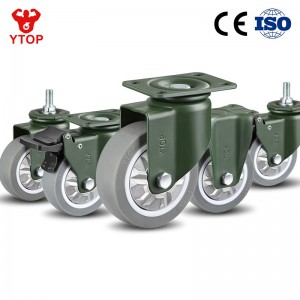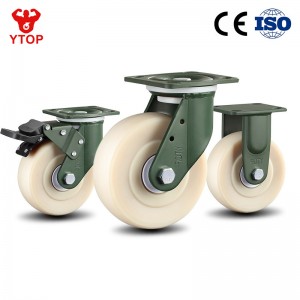When choosing casters, you are often faced with the choice between selecting TPR (thermoplastic rubber) and nylon materials. Today, I will explore the features, advantages and disadvantages of these two materials to help you make a more informed decision.
I. TPR Casters
TPR is a thermoplastic rubber material with good elasticity and abrasion resistance, TPR casters usually have better impact and corrosion resistance, and have better adaptability to some rough ground. In addition, TPR casters have a certain degree of softness, feel good, not easy to cause noise to the surrounding environment.
However, TPR casters also have their limitations. Due to its poor high temperature resistance, generally around 70-90 ℃, so it is not suitable for use in some high temperature environment. In addition, the bearing capacity of TPR casters is relatively low, which may not be suitable for some heavy-duty transportation scenarios.
Second, nylon casters
Nylon is a synthetic resin material with high strength and wear resistance. Nylon casters usually have high load capacity and high temperature resistance, which is good for some heavy-duty transportation and high temperature environment. In addition, nylon casters have better rotational performance and can provide a smooth moving experience.
However, nylon casters are usually more expensive and may not be suitable for some occasions with limited budget. In addition, nylon casters have relatively poor impact resistance and may require additional protection for rougher floors.
According to the characteristics of TPR and nylon casters, it is recommended to choose according to the actual needs. For some scenes that require softness and comfort, such as home and office, TPR casters may be a good choice. For some scenes that require high load and high temperature resistance, such as factories and warehouses, nylon casters may be more suitable.
Post time: Dec-15-2023


